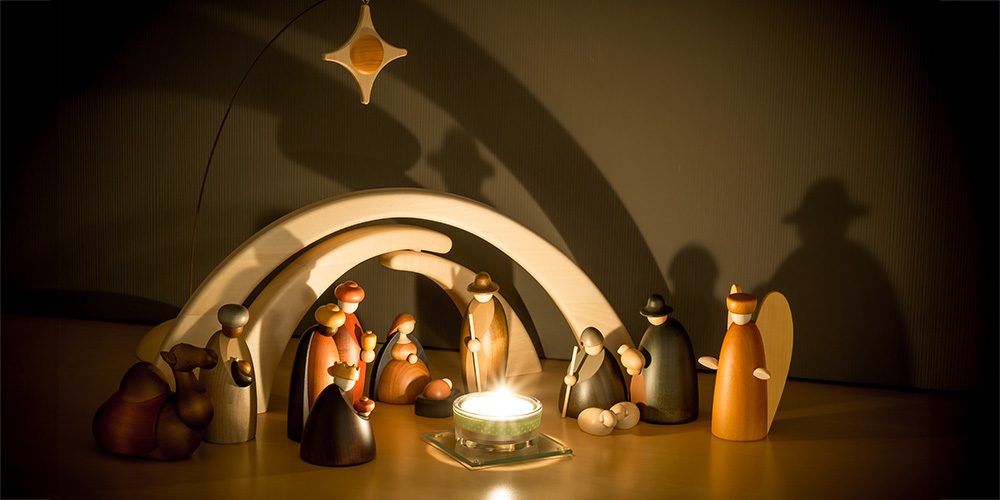Storytelling with a star: what makes the Christmas story timeless
It’s once again time for one of the most famous stories in the Bible. But what is actually being told – and how? We're joined by theology professor Moisés Mayordomo to take a look at the story of the birth of Jesus and how biblical narratives work.
19 December 2024 | Noëmi Kern
Joseph and Mary, the donkey and the ox, the baby Jesus in the manger, the angels, the shepherds and the three kings—at Christmas, the nativity figures are set up in many living rooms. The birth story of Jesus is inextricably linked with Christmas.
It occurs in the Bible in the Gospels of Luke and Matthew, but not in the Gospels of Mark and John, where Jesus only appears as an adult man when he is baptized by John. “The story of the birth of Jesus as we know it today is a mixture of the depictions of Luke and Matthew, enriched with elements that only came along over the course of time, such as the three kings, described in the Bible as astrologers.
Although their number is not mentioned, the story tells that they bring three gifts,” says Professor Moisés Mayordomo. The professor of theology specializes in the New Testament and his research focuses on how biblical stories are told and survive to this day, for example in movies and TV series.
He believes that biblical texts, like other texts, should be seen as literary texts, as narratives with fantastical and mythological potential. “Biblical stories are always also fiction, they are shaped and formed. They have their own literary form, for which factuality or historicity play no role.” Narratives that astonish us and contain elements that we can refer to even today survive best in the collective memory. According to Mayordomo, they belong to our cultural canon; finding their way into popular culture through films and music too.
Stories have a connection to reality
They are stories with a problem, a turning point, and a solution that appeal to us. “Think, for example, of Noah and his ark, with which he saved animals and people from the flood. It’s actually a terrible story, because most people drown – and yet it appears in almost every children’s Bible.” Crises, overcoming them and encountering new crises: we know these things from our own lives.
The story of Christmas utilizes this repertoire, which makes for good stories. The evangelist Luke in particular makes his narrative entertaining and exciting, says Mayordomo.
Joseph has to embark on a long journey with the pregnant Mary. All the inns are full. The only lodgings left was a stable, where Jesus was eventually born.
The shepherds who were present further support this image of poverty: “They’re simple people. They lived outside the city, and were therefore not part of society,” says Moisés Mayordomo. So it is the poor who are the first to come to the manger and find hope in this new intercessor. “The birth of a child symbolizes that something new has come into the world that was not there before. It’s always a sign of hope,” says Moisés Mayordomo.
Leader from the working class
The story of Christmas is told from the point of view of a lower social class. Joseph is a carpenter from Nazareth, a city that has no importance whatsoever. And Mary, an unmarried Jewish girl, gives birth to the Son of God. She does not come from an important family and is not described as particularly pious. It is not apparent why she was chosen.
“The message is clear: God is on the side of the weak,” says Mayordomo. Even Herod, who fears his power, does not succeed in killing this child. This also includes a critique of power.
The Bible expert finds it remarkable that Jesus was never made into anything more over the course of time. He always remained a working-class man and continued to live in humble conditions. “This is also evident from his death on the cross: this is how slaves, pirates and foreigners were executed.” And yet he was able to make a difference and had his followers – even without material wealth and traditional forms of power.



